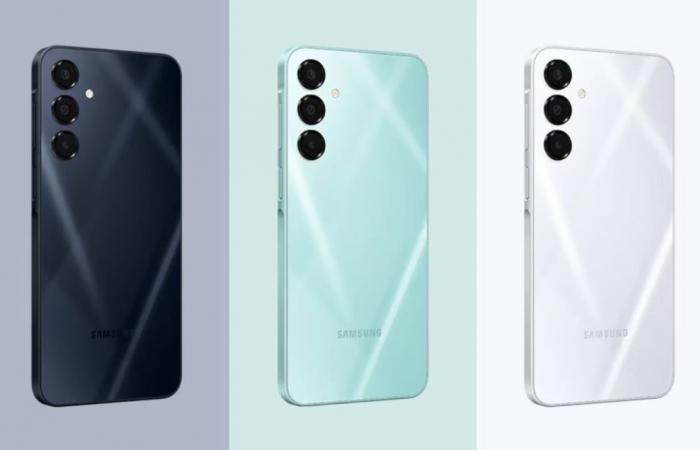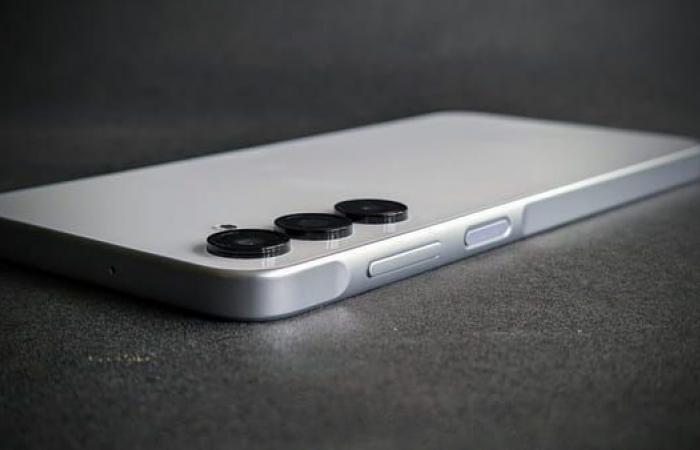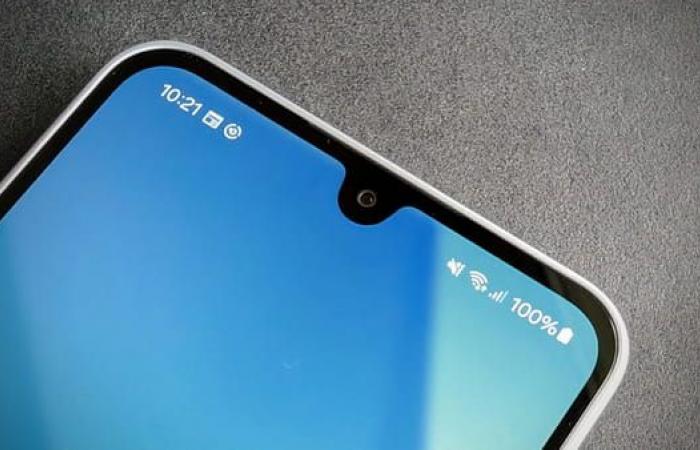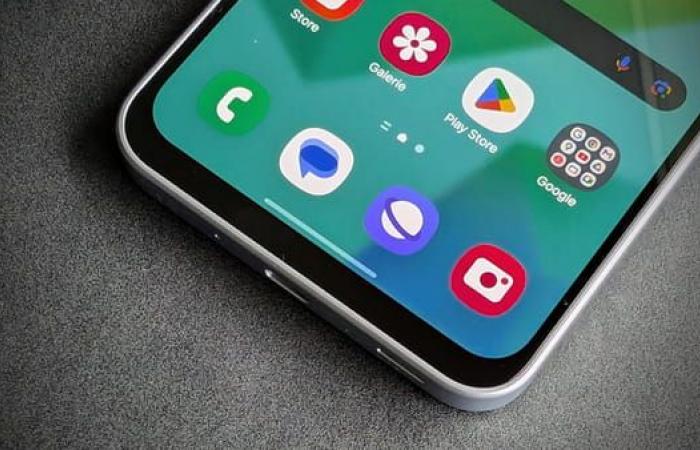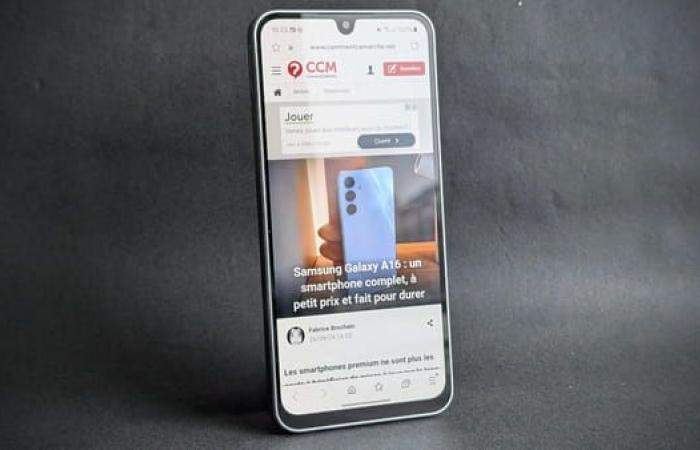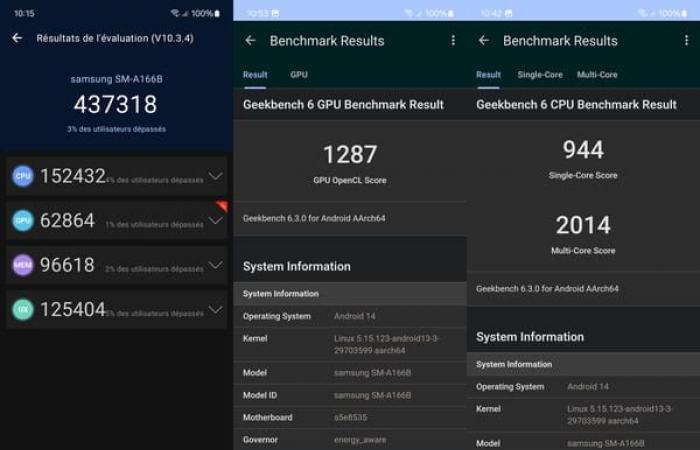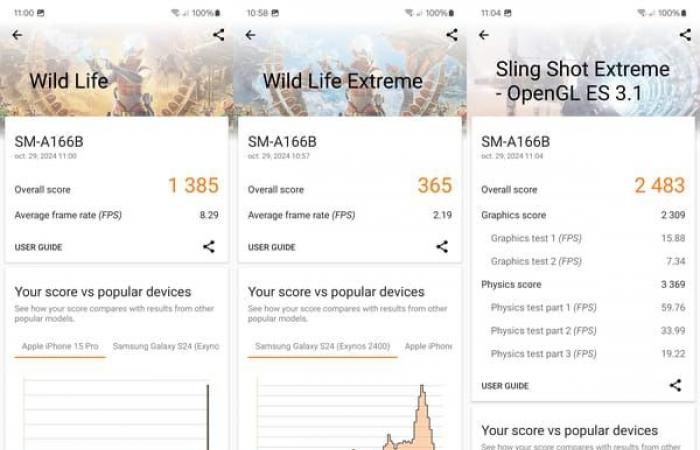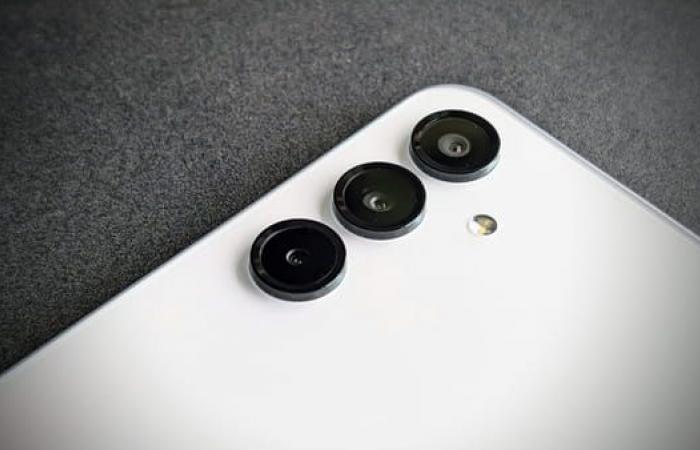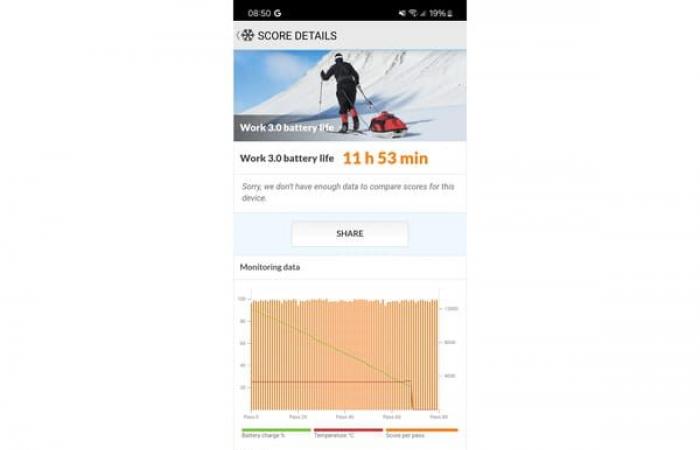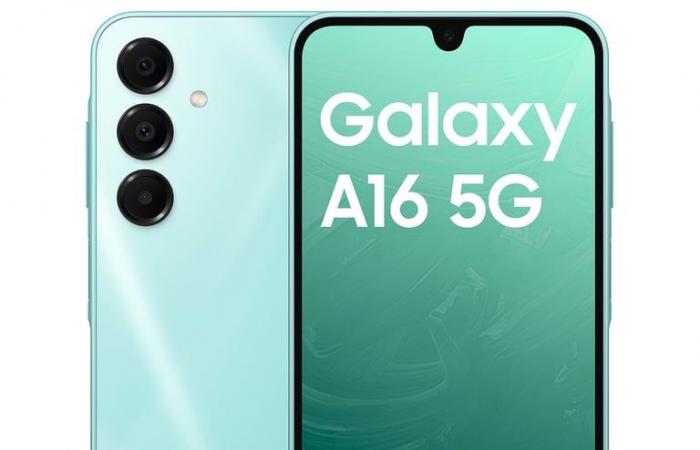Samsung’s entry-level smartphone family already welcomes a new arrival with the Galaxy A16 5G. A model that the manufacturer wants to last over time without however giving it the means to achieve this.
Just six months after the release of the Galaxy A15 5G released last April (read our test), Samsung is already delivering a new copy to replace it. An astonishing pace for this entry-level smartphone. Especially since the changes that accompany the Galaxy A16 5G mark significant progress for the manufacturer in this range.
Besides the few meager hardware improvements, it is mainly on the software side that the Korean wants to make the difference. No need to look for artificial intelligence tools, you won’t find any on board. The processor embedded in this device is not capable of running them. No, it’s rather on the follow-up of updates that Samsung hits a big blow. In this price range (less than 250 euros), most manufacturers are content to provide two or even three years of updates. For this A16, Samsung promises system monitoring such as security patches for 6 years. This is just one year less than for its premium models in the S range. An approach rare enough to be welcomed. It remains to be seen whether the new addition to the A family will be able to physically last the length. Not sure as it already seems to be struggling with the current Android version. We tested the Galaxy A16 in 5G version (there is also a cheaper 4G version at 219 euros) for several days. Here is our verdict.
|
|
Samsung Galaxy A16 5G test: a larger size for an identical design
This Galaxy A16 5G hits the shelves just six months after its predecessor. So don’t expect to admire a radically different design. To be honest, it is even strictly identical to that of the A15 5G. The frame remains made of aluminum while the back sports a glossy finish which still retains fingerprints. The three photo modules remain aligned vertically in the upper left corner. No doubt, it’s a Samsung mobile.
However, the Galaxy A16 5G manages to distinguish itself from its predecessor on a few points. First, Samsung wanted to think bigger. The device thus accommodates a 6.7-inch screen compared to 6.5 inches for the A15. As a result, it sees its size increase a little by gaining 4.3 mm in length and 1.1 mm in width. On the other hand, this sudden growth allows it to thin out, going from 8.4 to 7.9 mm thick. A bit larger therefore, it remains no less pleasant in the hand. Its edges remain flat and slightly beveled. The right edge still marks an outgrowth to easily locate the volume and power buttons/fingerprint reader.

From the front, on the other hand, it’s a bit of a disappointment. The arrangement of the selfie camera at the top of the screen in a waterdrop notch and the fairly pronounced “chin” at the bottom of the device remind us that we are holding an entry-level model in our hands. As are the large black borders that surround the screen. Too bad because until then, the illusion was perfect.
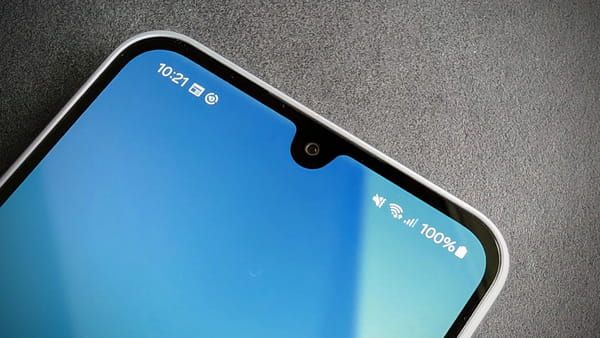

Finally, note that the Galaxy A16 5G benefits from IP certification (absent on the A15). Certainly, it is not the highest with the IP54 index which ensures resistance to dust and water splashes, but it is already not bad.
Samsung Galaxy A16 5G test: a top Oled screen
The panel chosen by Samsung may be larger than before (6.7 inches compared to 6.5), but it has the same characteristics as that of the A15 5G. We benefit from an FHD+ definition, i.e. 2340 x 1080 pixels, with therefore a slightly lower resolution (385 ppi compared to 396 ppi) due to the increase in size. Nothing dramatic, it’s not perceptible to the naked eye. The refresh rate is also identical and set at 90 Hz maximum. It is not adaptive. You will have to choose between Standard (60 Hz) to save battery and High (90 Hz) for more fluidity.

As for the brightness, it also seemed similar to that of the A15 5G, that is to say very good for a smartphone of this price. Enough to read without any glitch what is displayed there in full sunlight. We just regret that the panel takes so many reflections.
Samsung Galaxy A16 5G test: performance too fair
Technical sheet
| Screen size | 6.7 inches |
| Screen definition | 2340 x 1080 pixels |
| Screen technology | Amoled |
| Refresh rate | 60-90 Hz |
| SoC | Exynos 1330 |
| RAM | 4 Go |
| Storage | 128 Go |
| Photo sensors (back) | 50 + 5 + 2 Mpx |
| Photo sensor (selfie) | 13 Mpx |
| Video | Up to FHD at 30 fps |
| WiFi / Bluetooth | 5 / 5.3 |
| 5G | Oui |
| Fingerprint sensor | On the side |
| Facial recognition | Oui |
| Battery | 5000 mAh |
| System | Android 14 |
| Dimensions | 164,4 x 77,9 x 7,9 mm |
| Weight | 200 g |
Let’s not beat around the bush: the A15 5G was not a lightning bolt…neither was the A16 5G. The device separates from the MediaTek 6100+ chip in favor of an in-house Exynos 1330 SoC. An eight-core chip engraved in 5 nm composed of two Cortex-A78 cores at 2.4 GHz and six Cortex-A55 cores at 2 GHz. It is supported by a Mali-G68 GPU and still 4 GB of RAM. Only. In 2024, for a device costing 250 euros, it’s a bit short. A configuration which therefore does not promise the moon and which, on paper, should ensure the minimum. Unfortunately, we have to face the facts.
Thus equipped, the A16 5G is struggling. The results of the various benchmarks to which we subjected it certainly show a slight progression compared to the Galaxy A15 5G, but the manipulations in reality reveal some difficulties. The interface often lacks responsiveness. Switching from one app to another gives rise to some jerks in the animations and you sometimes have to repeat the gestures on the screen for the command to be understood. So many slowdowns that cause a lot of frustration and annoyance when the desired command ends up being executed with a lot of delay. However, none of the apps we launched ever crashed. Phew!
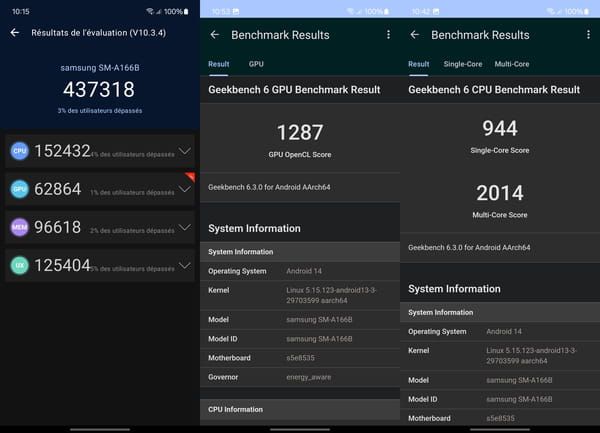
In-game, don’t expect miracles either. With our reference title Genshin Impact, the screen comes to life at 30 frames per second with a level of detail set to Very low. By moving to a frequency of 45 frames per second, playing becomes complicated. In short, this A16 5G will allow you to have fun with small light games but not to embark on epic 3D adventures.
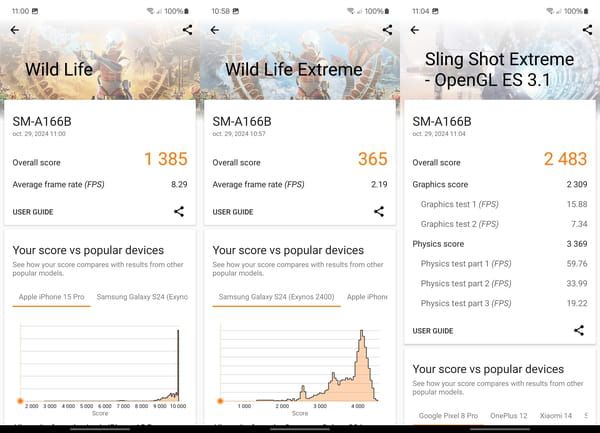

Samsung Galaxy A16 5G test: decent photos during the day, mediocre at night
For the photo aspect, Samsung has not complicated the task. The A16 5G strictly uses the same frame as its predecessor. It therefore relies on a 50 Mpx wide-angle (f/1.8), an ultra-wide-angle of 5 Mpx (f/2.2) and a 2 Mpx macro sensor (f/2.4) . On the front, the selfie camera also remains unchanged with a 13 Mpx sensor (f/2.0).

Unsurprisingly, we find the qualities and defects of the A15 5G released last spring. In favorable light conditions, the wide-angle provides decent shots with a good level of detail. The brightness is managed favorably and the results are generally satisfactory for everyday photos.


No optical zoom obviously on a device at this price. The A16 5G therefore offers several digital zoom levels from 2x to 10x. In 2x, the results remain consistent. There is a slight degradation of colors but nothing dramatic. Beyond the x2 zoom, details are lost, smoothing becomes more aggressive and images less and less usable. Furthermore, as with the Galaxy A15 5G, we noticed a certain latency of the device when triggering as well as during focal length changes. This lack of responsiveness can cause you to miss a shot. Damage.



The ultra-wide-angle module provides images that are still acceptable as long as they are viewed on a small screen. Otherwise, we will be able to appreciate the loss of details due to the weakness of the sensor (5 Mpx).


In low light, the A16 5G will not be able to satisfy you. The images are noisy and the colors lose their naturalness with the software processing, which is again a bit aggressive.

Samsung Galaxy A16 5G test: stagnating autonomy
The Galaxy A16 5G has, lo and behold, the same battery as the previous model, a 5000 mAh battery. During its presentation, Samsung told us that it had optimized its use to obtain half a day of additional autonomy. The PCMark benchmark to which we submitted it does not seem to validate the promise, quite the contrary. Where the Galaxy A15 5G lasted a little over 19 hours, the A16 5G only lasted almost 12 hours for the same exercise. We repeated this test twice with no further success. We therefore wonder to what extent this optimization was carried out. In reality, this Galaxy A16 5G lasted, like its predecessor, a day and a half with normal use and a photo session of more than an hour. So no progress on this side.

On the other hand, we see a slight progression regarding recharging. However, the device takes the 25W charging power of the A15 5G. Connected to an Anker 45W charger (no charger supplied), it took 84 minutes to recharge from 0 to 100%. 30 minutes allowed us to recover 54% of autonomy. It’s better than the A15 5G.
Samsung Galaxy A16 5G: a smartphone designed to last, really?
The intention is good. Excellent even. Focusing on extending the lifespan of even entry-level smartphones by extending the tracking of system updates and security patches is going in the right direction. However, seeing the current performance of this Galaxy A16 5G, we ask ourselves questions. The Exynos 1330 processor already seems to be running out of steam today. It must be said that it is not really helped in its task with the meager 4 GB of RAM that comes with it. And if the storage space can grow over time (up to 1.5 TB using a microSD card), this is not the case for the RAM. So much so that we wonder if it will be able to run the next six versions of Android and keep up the pace until 2030. We strongly doubt it.
In the meantime, this Galaxy A16 5G nonetheless remains a decent smartphone for the price. We would have appreciated a more powerful processor to avoid the jerks that punctuate the animations on the screen and the various slowdowns during use. The photo component, if not the most efficient, is satisfactory if the light conditions are good and the autonomy is there. If you were hesitant to equip yourself with an A15 5G (released only 6 months ago), the A16 5G may represent a good alternative with its larger screen. This is its main asset. We just wonder why Samsung didn’t just call it A15 Plus as the progress is minor…

